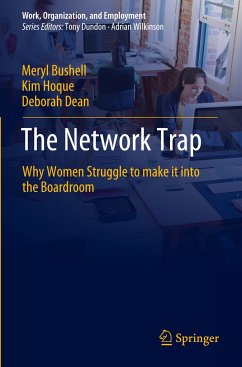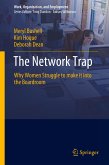As we begin the third decade of the twenty-first century, women have entered the workplace in unprecedented numbers, are now outperforming men in terms of educational qualifications, and are excelling across a range of professional fields. Yet men continue to occupy the positions of real power in large corporations.
This book draws on unique, unprecedented access to Chairs of FTSE 350 Chairs, boardroom aspirants and executive head-hunters, to explain why this is the case.
The analysis it presents establishes that the relative absence of women in boardroom roles is not explained by their lack of relevant skills, experience or ambition, but instead by their exclusion from the powerful male-dominated networks of key organisational decision-makers. It is from within these networks that candidates are sourced, endorsed, sponsored, and championed. Yet women's efforts to penetrate these networks are instead likely to trap them into network relationships that will beof little value in helping them to fulfil their career aspirations.
The analysis also identifies why women struggle to gain access to these networks, and in doing so, it demonstrates that the network trap in which women find themselves will not be overcome simply by encouraging them to change their networking behaviours. Instead, there is a need for a fundamental reconsideration of how boardroom recruitment and selection is conducted and regulated, to ensure the development of a more open, transparent and equitable process.
This book draws on unique, unprecedented access to Chairs of FTSE 350 Chairs, boardroom aspirants and executive head-hunters, to explain why this is the case.
The analysis it presents establishes that the relative absence of women in boardroom roles is not explained by their lack of relevant skills, experience or ambition, but instead by their exclusion from the powerful male-dominated networks of key organisational decision-makers. It is from within these networks that candidates are sourced, endorsed, sponsored, and championed. Yet women's efforts to penetrate these networks are instead likely to trap them into network relationships that will beof little value in helping them to fulfil their career aspirations.
The analysis also identifies why women struggle to gain access to these networks, and in doing so, it demonstrates that the network trap in which women find themselves will not be overcome simply by encouraging them to change their networking behaviours. Instead, there is a need for a fundamental reconsideration of how boardroom recruitment and selection is conducted and regulated, to ensure the development of a more open, transparent and equitable process.








